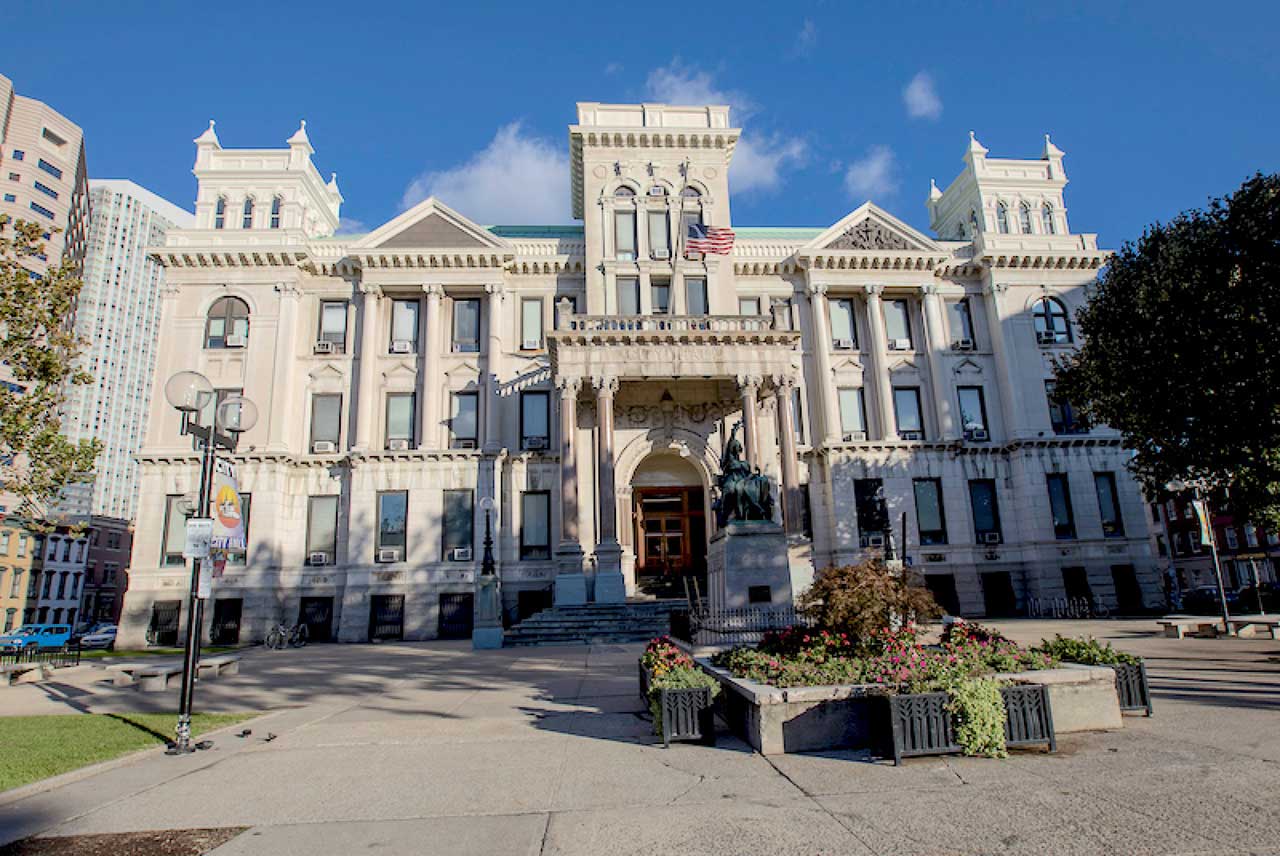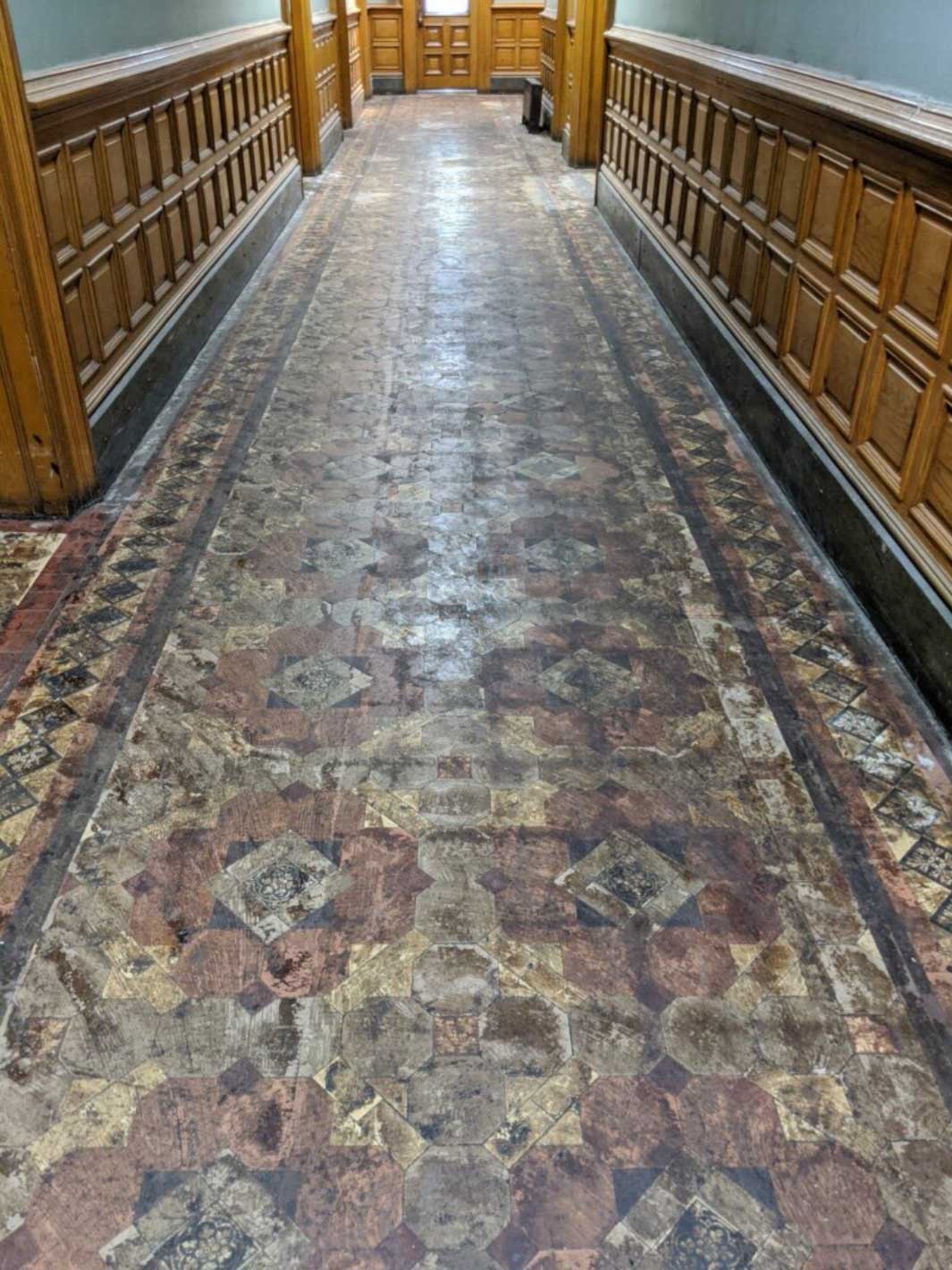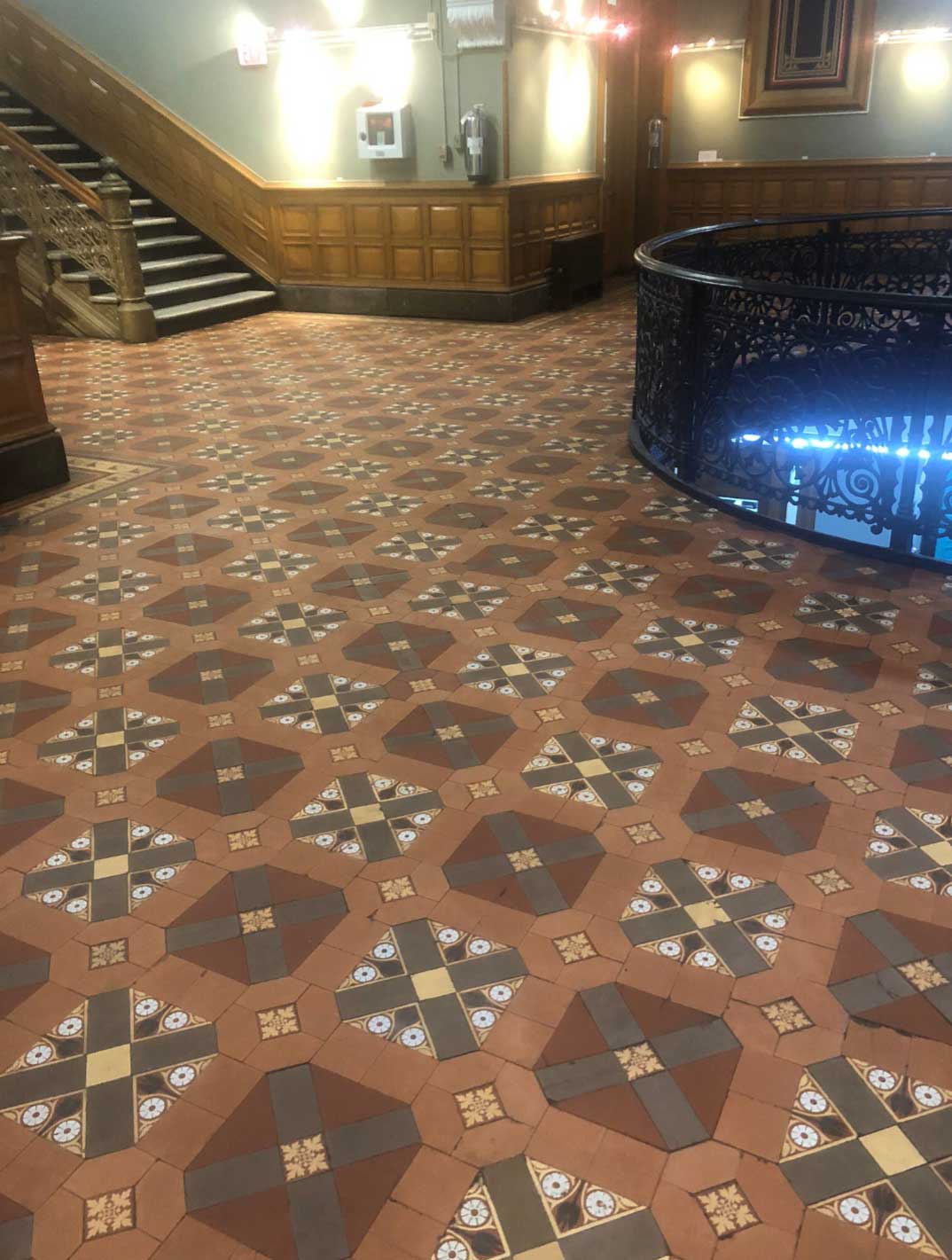
A project to restore Downtown’s historic City Hall revealed some interesting history last month and work is currently underway at the property to make the building safer amid COVID-19 and bring some long vacant space back into use.
Jersey City’s government has been operating at 280 Grove Street since the building was completed over a century ago in 1896. The structure was designed by Lewis H. Broome, who served as New Jersey’s official architect under then-Governor Woodrow Wilson during the 1910s. Considered one of the Garden State’s best architects, his other work includes design on Trenton’s Statehouse Dome and the Windsor Theater in New York City.

A renovation slated for this year got sped up due to coronavirus-related safety measures being installed, but workers recently uncovered some hidden history at the property. Mayor Steve Fulop revealed in tweets what are believed to be the original Stoke-on-Trent tiles that were buried beneath vinyl flooring that was installed in the 1960s.
The tiles originate from a city in Staffordshire, England that has long been known as the home of that country’s pottery industry. Covered in dirt and grime, the tiles have since been cleaned and have received a lot of attention since they were discovered.

“We expected to find nothing underneath [the vinyl],” Fulop recently told BBC Radio Stoke. “We know the building was built in the 19th Century around 1850, perhaps a little bit later.”

Other relics discovered during the renovation include parquet floors in Fulop’s office that were obscured by blue carpet. The next portions of the building’s renovation include replacement of windows and a power washing of the façade. Additionally, interior space rendered unusable by a 1970s-era fire will be restored.
The offices themselves will be getting $180,000 in furniture as well following the council’s approval of a resolution last month, which will include a new cubicle system. The building’s overhaul is slated to be completed by the end of the year.
Related:
- Capital One Vacates Iconic Downtown Jersey City Bank Building
- St. Peter’s Will Appeal Jersey City’s Demolition Denial
- Loew’s Jersey City Transformed for Upcoming Appearance in ‘The Joker’


